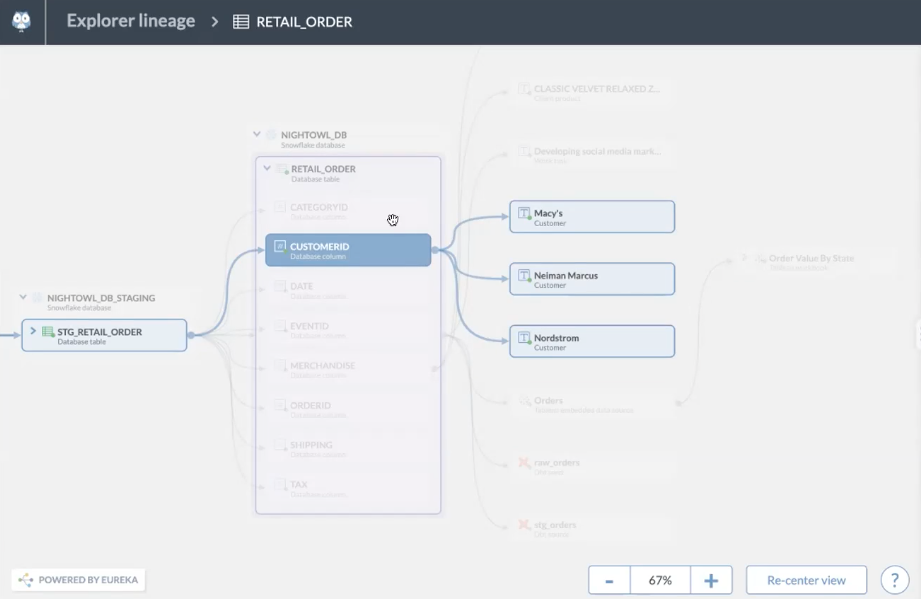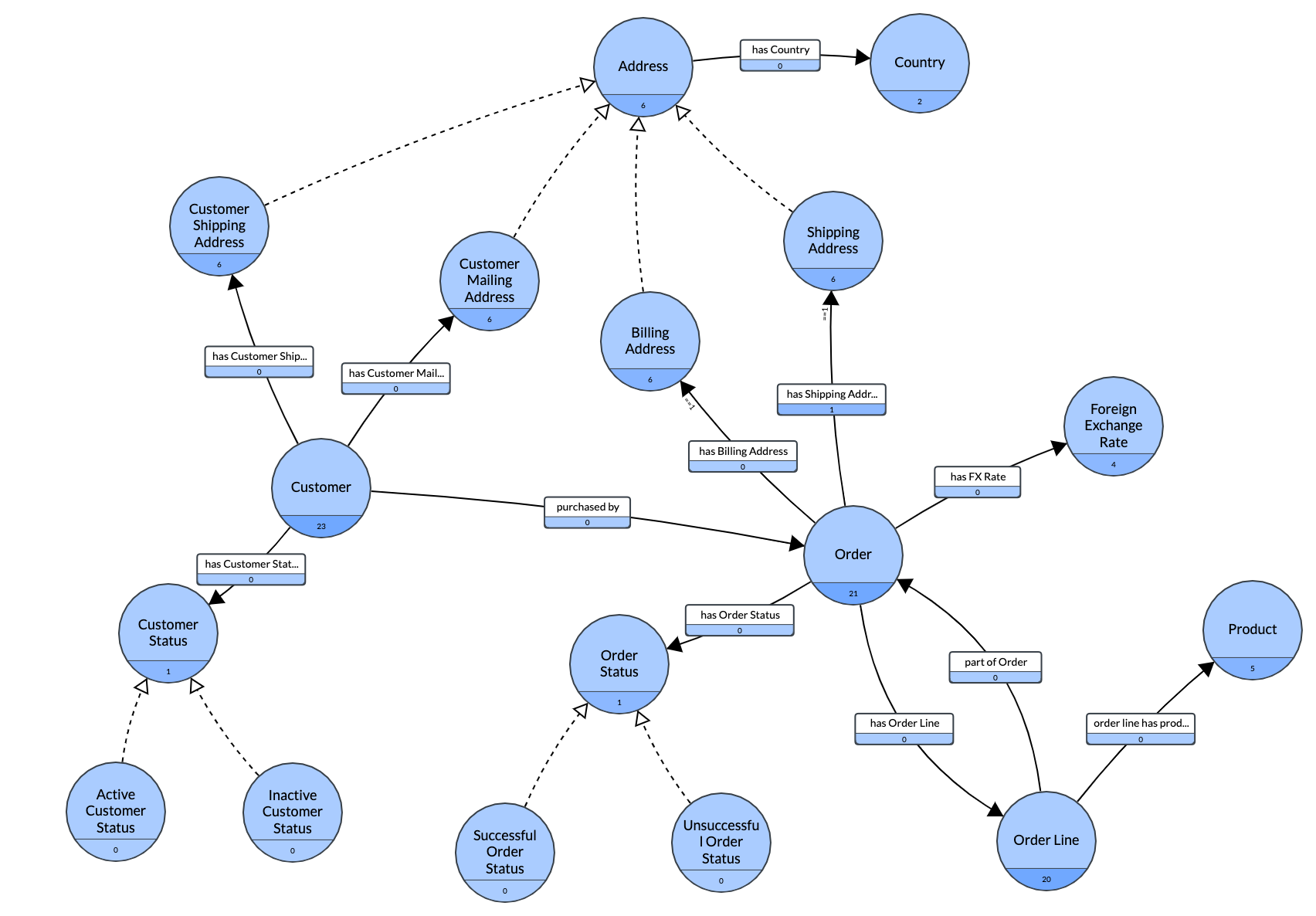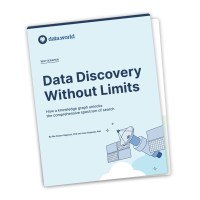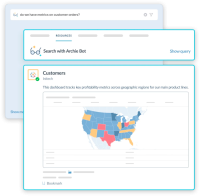The importance of data management in the big data era
Data is the foremost competitive battleground of our time, and today modern, data-driven organizations outperform their competition in virtually every way.
Furthermore, the amount of data generated and consumed by individuals and businesses continues to increase at an exponential rate.
Considering this ever-increasing volume of data, data sources, and data types, it’s becoming significantly more difficult for businesses to manage their data assets effectively; a crucial handicap in a world where today's winners prioritize giving employees rapid access to accurate, clear, and trusted data, and the business context to make sense of it.
So, how do data leaders manage all this data? How can data professionals organize and make sense of it all? And how can organizations ensure they’re getting the right data to their data consumers when they need it, along with business context to ensure everyone’s on the same page?
The answer is an enterprise data catalog, which anchors the modern data stack and provides data governance, data access, data discovery, data lineage, business context, and myriad other capabilities, allowing users to make better, faster, data-driven decisions in constantly changing business environments.
The power of big data for the modern enterprise business

Numerous studies have shown most organizations that base business decisions on their data assets and thorough data analysis enjoy significant advantages over their competition.
Whether it’s using available data to improve customer acquisition, analyzing data sets to increase efficiency and profit, or capitalizing on business insights brought to light by analysis of their various data sources, “data-driven companies perform better in almost every metric.”
According to a recent article in Forbes:
“A Mckinsey report says data-driven organizations provide EBITDA increases of up to 25%. According to Boston Consulting, the majority of the top 10 innovative companies in the world are data firms.”
However, according to the same article:
“But achieving a sustainable competitive advantage from (data and analytics) is very challenging. Many D&A projects are not very successful. According to Gartner, only 20% of the Data and Analytic solutions deliver business outcomes.”
Why is this the case? Forbes attributes these failures to the lack of a focus on building strong data cultures, in which data assets and data sources are paired with business context to enable understanding, and data governance and self service efforts are allowing data users access to the right data at the right time.
How an enterprise data catalog can empower data teams, data users, and data consumers within your organization
So how do you build a strong data culture? The first step is democratizing access to your organization’s data assets while also democratizing your employees’ understanding of it. After all, it’s not the data itself that’s valuable; It’s the knowledge and insights gleaned from analyzing your data that’s worth its weight in gold.
But how do you democratize access and ensure your teams are understanding data? A good place to start is with an enterprise data catalog, the foundation of the modern data stack and a good starting point for establishing a modern and beneficial system of data governance.
What is a data catalog?
A modern data catalog is a tool used to organize, manage, and discover data assets within an organization. It’s a central repository that stores metadata about data assets, such as data sources, data formats, data quality, data lineage, and data owners. Data catalogs enable data professionals to understand the data assets available to them — in the same language used by the business — where the data came from, and how it can be used.

Data assets refer to any data that has value to an organization, such as customer data, financial data, and transactional data. Data engineers are responsible for managing these data assets, which includes collecting, storing, and processing them. Data management involves the entire process of managing data, including collection, processing, storage, and retrieval.

Data catalogs are used to make the data discovery process easier. Data discovery is the process of identifying data assets that are relevant to a particular use case. A data catalog allows users to easily search for and access data assets that are relevant to their needs.
Without a data catalog, managing data can be a complex and time-consuming process. And without data catalogs and data catalog tools, data analysts, data scientists, and other data professionals may spend hours working on data discovery, searching for the right data asset. Worse, without cataloging data, they may even be completely unaware of the existence of a particular data set. This can lead to wasted time and resources, as well as an incomplete data inventory or inaccurate data analysis.
Enterprise data catalogs
Enterprise data catalogs are designed for large organizations with complex data infrastructures. A keystone of the modern data stack, they provide a centralized repository for managing and sharing data across different departments and teams, and a unified view of all data assets — including sensitive data — and ensure that data governance and security protocols are maintained.
(Sensitive data includes data types such as as personally identifiable information (PII) and financial data.)

Primary functions of data catalogs
Most data catalogs provide the following functionality for enterprise data teams:
Data discovery
One of the primary functions of a data catalog is data discovery. A modern data catalog provides an inventory of data assets and helps users search for those assets based on their metadata, or "data about data." This catalog metadata can include keywords, data source, data type, and other attributes, enabling users to find the right data asset for a particular project.
Data access
Another critical function of a data catalog is data access. A data catalog provides a centralized location for accessing data from multiple data sources within your data ecosystem, whether those sources are cloud data warehouses, data lakes, or other. This ensures that data is readily available to those who need it, while also maintaining appropriate data governance and security protocols.
Data governance
Data governance is a critical aspect of data management. It ensures that data is accurate, secure, and used appropriately. Data catalogs provide a central location for managing data governance policies and procedures, ensuring that data is managed in accordance with relevant regulations and best practices.
Become data-driven with data.world
Learn more about how data.world's cloud-native, knowledge-graph-powered enterprise data catalog can empower your data-driven organization.
Advanced data catalog functions
Advanced data catalogs do much more than simply govern data or make data discoverable and accessible. Modern data catalogs provide the all above functionality and more, making them even more powerful tools for any business aiming to become a truly data-driven organization.
Data lineage
Data lineage is another important aspect of data management, and an aspect for which a modern data catalog should enable a seamless user experience. Data lineage refers to the historical record of a data asset, from its origin to is current state, any transformations, and the processes it has been through.

A modern data catalog helps track data lineage, empowering organizations to understand where their data comes from, how it has been transformed, and who has used it. Data lineage is important for data quality and compliance purposes, as it enables data professionals to understand how data has been processed and to identify any potential issues.
Self-service analytics
Self-service analytics are designed for data consumers who need to discover and access data assets independently. Modern data catalogs should provide a user-friendly search experience in a manner similar to that of Google, providing search results based on exact metadata match, but also based on "similar" or "related" business metadata that might help data users discover data relevant to their projects that they hadn't previously considered, or of which they were previously unaware. Self-service data analytics is particularly important in organizations hoping to democratize data access to empower their workers to make better, data-driven decisions, and to save the time and resources of data engineers, data scientists, and data stewards who would otherwise expend large amounts of effort simply fulfilling data requests.
Machine learning and artificial intelligence (AI)
AI technologies and machine learning can improve data team productivity through data catalog integrations, with particular potential around automating data discovery and governance, automatically enriching metadata in terms of people, policy, context-oriented fields, and all types of relationships.

The business value of a data catalog
To truly understand the business value of a data catalog, consider how much your company spends annually on data products (data lakes, data warehouses, data security, cloud infrastructure, etc.) and people (data scientists, data engineers, data analysts, data stewards, etc.). It's likely a significant portion of your company's overall IT budget.
Given today's challenging times, you may expect the ROI from your data initiatives to be lower than in years past. But according to Gartner, companies that offer a “curated catalog of internal and external data to diverse users will realize twice the business value from their data and analytics investments.” In fact, data catalogs can provide outsized impact in times where data is increasingly important.

Boiled down its core benefits, a data catalog can empower massive improvements in your organization's push to become truly data driven. Implementing a data governance methodology underpinned by a data catalog can lead to improvements in:
Clarity: Using a common business language — business metadata — your people will finally understand your data well enough to answer business questions. By expressing data in familiar and consistent business concepts, anyone can discover, understand, and use data to answer important questions. With unexplainable data, you overlook its value, leave crucial business problems unresolved, and prevent many knowledgeable and talented employees from data-driven decision making.
Accuracy: Cataloging your data in a single location means your data catalog becomes a single source of truth, and being able to track data lineage means your workers can rely on your data's accuracy.
Speed: The ability to find exactly the data they need when they need it means your people will be able to answer business questions fast enough for them to react to a changing business environment.
Why a data catalog must be powered by a knowledge graph
As you now understands, the business goal of a data catalog is to empower your workforce to get more information from your data investments, gain better data insights as a whole, and make smart decisions quickly.
To accomplish this goal, an enterprise data catalog needs to create and manage collections of data and the relationships between them in your organization, and provide a unified view of your data ecosystem to data producers (e.g. data engineers, data stewards) and data consumers (e.g. data scientists, data analysts). These collections include tables and columns of a database, business glossary terms, analysis, and reports from BI dashboards. A key takeaway is that managing relationships should be the bread and butter of data catalog tools. That is where knowledge graphs come in.
What is a knowledge graph?

Knowledge graphs are a way of organizing and representing information in a machine-readable format. A knowledge graph model represents a collection of real-world concepts (displayed as nodes) and relationships (displayed as edges) in the form of a graph used to link and integrate data coming from diverse sources. They bridge the “data-meaning gap,” connecting business terminology and context with data and enabling data access via a commonly understood language, dramatically improving search, discovery, clarity, and accuracy.
The benefits of building your data catalog on a knowledge graph
By building your data catalog on a knowledge graph you can extend that same graph model across any new sources of data that you acquire or spin up. And you can easily connect the data to your own business terms.
Conversely, a data catalog powered by traditional relational technology is rigid and inflexible. This means it can take months to support new types of data sources. During that time, how can you empower your data workers when they can’t find, access, or use new, critical sources of data?
Companies building a data catalog on relational architectures almost by definition can’t be data-driven.
But be careful; The adoption of knowledge graph models by data-driven industry behemoths like Airbnb, Lyft, and LinkedIn has made plenty of noise in the world of data. Perhaps that’s why, all of a sudden, it seems every data catalog is powered by a knowledge graph, some seemingly magically switching from traditional relational technology overnight. It's important you confirm any enterprise data catalog you consider is truly powered by a knowledge graph.
Conclusion
A modern data catalog enables an approach to data governance that provides your team with quick access to clear, usable, and reliable data, empowering every member of your organization to make better, data-informed decisions, uncover greater insights, and drive continuous improvement across all facets of your business.
Become data-driven with data.world
Learn more about how data.world's cloud-native, knowledge-graph-powered enterprise data catalog can empower your data-driven organization.
Header image credit: Hiraman




